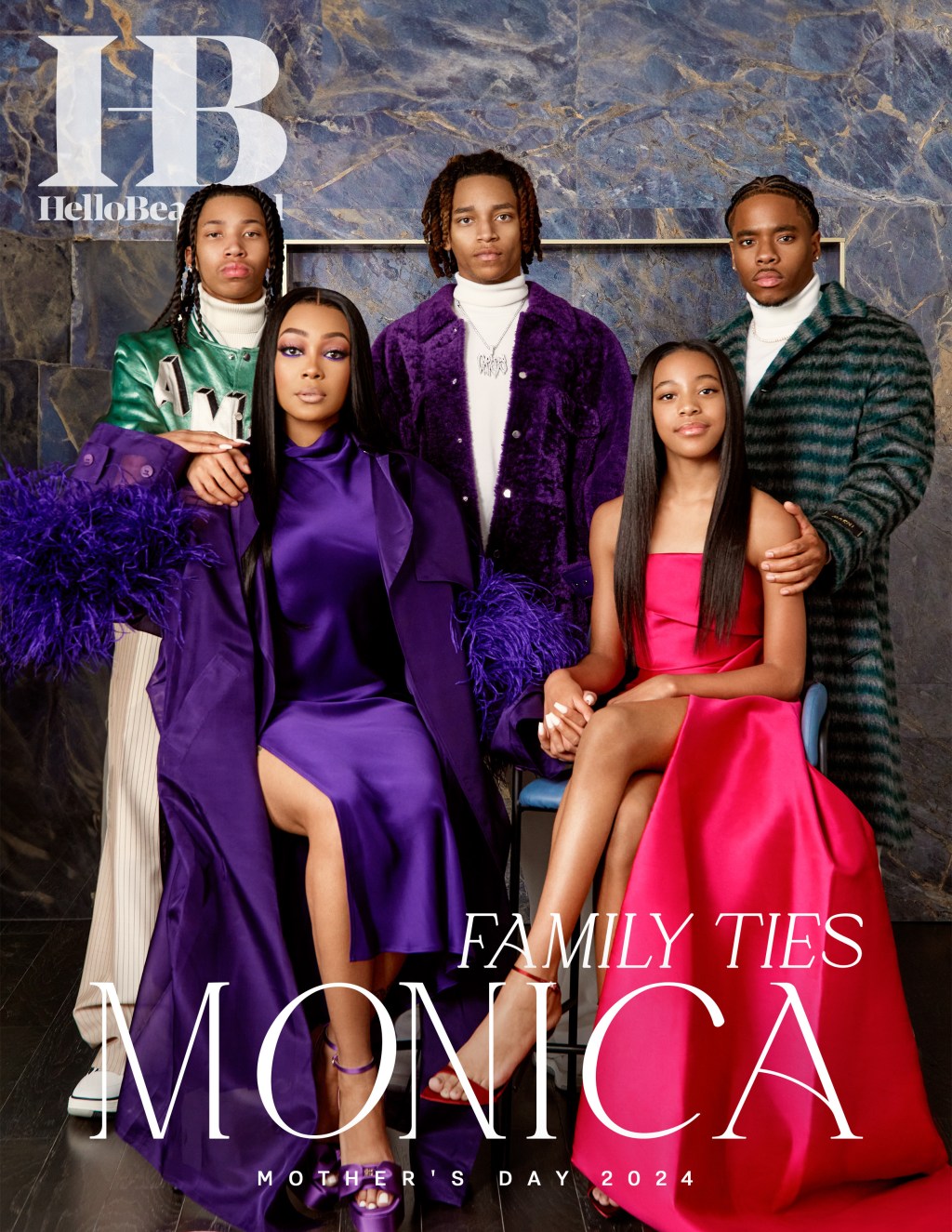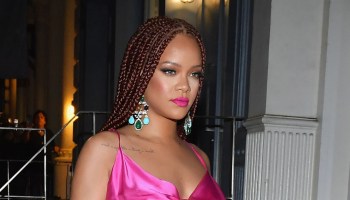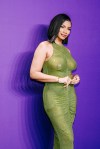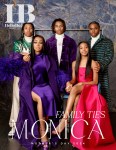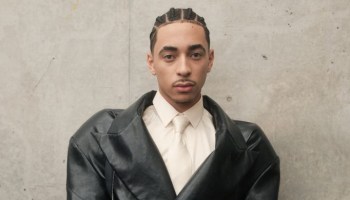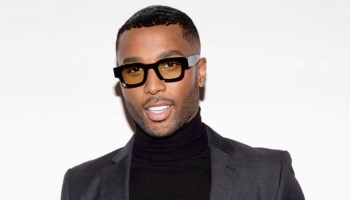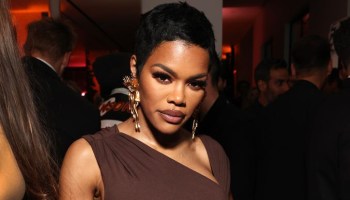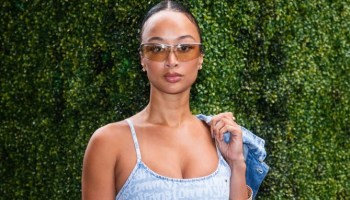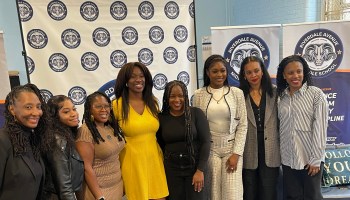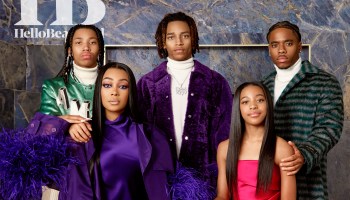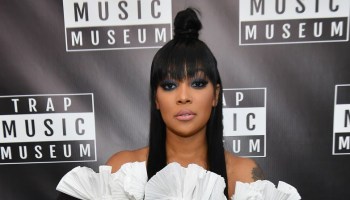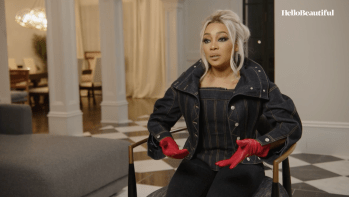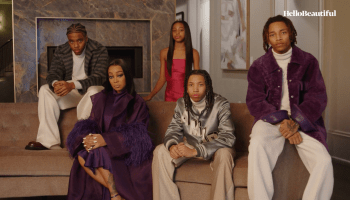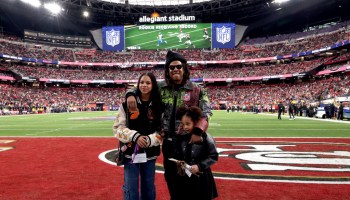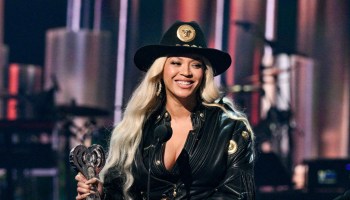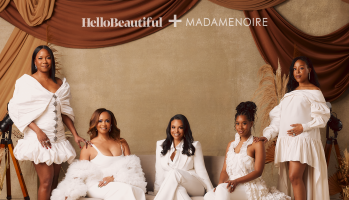When Rihanna became the first Black woman to run a major fashion house with the launch of FENTY, she made sure that the first collection launch dropped with a powerful statement. As the songstress showed off the campaign images, which featured dark skinned models rocking their natural hair and slaying in stark white belted suits, she revealed she drew inspiration for the branding of it from the works of activist and photographer Kwame Brathwaite, who helped spark the 1960s Black Is Beautiful movement.
The FENTY campaign images echoed the imagery in Brathwaite’s photographs from the 1950s and 1960s, which documented the culture of Harlem’s African-American community, as well as the work he accomplished with his brother, Elombe Brath, and other artists and jazz lovers’ in their African Jazz-Art Society & Studios ( AJASS). In addition to community-building jazz shows, they also put on fashion shows, which starred the Grandassa Models, a group of African-American female activists Kwame and Elombe launched in 1962. The models designed their own clothes, and celebrated their natural hair and skin color.
“When I was coming up with the concept for this release, we were just digging and digging and we came up with these images,” Rihanna told Vogue UK. “They made me feel they were relevant to what we are doing right now,” adding that Brathwaite, now 81, gave her permission to use the images. “It was a really strange and powerful parallel.”
Rihanna continued, adding that she wasn’t necessarily trying to make a political statement with the launch, but was more so “embracing the fact that people should be more aware. The “Lemon” singer added, “Definitely, we want people to see the parallels between what was then and what this is now, in a modern way.”
So, who exactly were The Grandassa Models, who stepped confidently front and center at those fashion shows, wearing headwraps, afros, and looks they designed themselves? We chatted with Kwame Brathwaite’s son, Director of Archives for the Kwame Brathwaite Archive and Associate Professor of Africana Studies and History at the University of Delaware, Dr. Tanisha Ford, to get the lowdown on just that.
After Kwame Sr., Elombe, and others formed AJASS, they recruited African-American women in the community who embodied their ‘Black Is Beautiful’ mantra, many of whom were already prominent activists (like Black Rose), to be Grandassa Models. The Original Grandassa models were Clara Lewis, Black Rose, Nomsa Brath, Priscilla Bardonille, Mari Toussaint, Esther Davenport, Wanda Sims and Beatrice Cramston. “They had a fully formed political ideology,” Ford, who co-authored Kwame Brathwaite: Black Is Beauiful, said. “It wasn’t like they were just looking for Kwame and Elombe to give them the Black nationalists thought.”
It was a requirement for the Grandassa Models to wear their hair natural for the shows, and although other activists were in the spotlight rocking afros at the time, natural hairstyles weren’t deemed as appropriate in the African-American community to wear outside of homes. It was a big deal for the Grandassa Models to rock their natural hair in a public setting.
“When some of the models were recruited, they were recruited because they were already wearing their hair natural,” she said. “So Kwame and Elombe might see a Black woman walking down the street with natural hair and say, ‘hey, we have his troupe called the Grandassa Models.’ Other times, the models would recruit other models.”
“It was revolutionary,” Kwame Jr. told Hello Beautiful. “During that time – the 1950s and 60s – it was unacceptable to wear your hair in any natural hairstyle. The point that was being made was that you can be your natural self and be proud of who you are, and not accept another person’s standard of beauty as your own.”
That standard of beauty wasn’t just about hair. It was about body types too. AJASS was “invested in a body positive movement that celebrated the thick, curvaceous bodies of Black women at a time when ultra-thin models Twiggy and Jane Shrimpton were the body type du jour in the high fashion industry,” Ford continued. “These women were saying no, we want to embrace our curves. We want to embrace our full noses, our full of lips.”
She continued, “They were precursors to this moment that we’re living in now, where again, it’s like all bodies are beautiful. We should accept all bodies. The clothes should fit the body. The body shouldn’t have to fit the clothes. That message today is one that the Grandassa Models were really promulgating in the early 1960.”
So, it was fitting that the Grandassa Models designed and made their own clothes. “Even if you weren’t the best designer in the bunch, you had to learn how to make your own garments because the idea was that they did not want to rely upon things made by European designers, white American designers, that they would create their own aesthetic instead of accepting the aesthetic from the mainstream fashion industry.”
The models used their fashion designs as a way to create community, because they created their looks together. “They would talk about and design their ideas together and then they would come in to their rehearsal wearing their garments,” Ford said. “It was a community like that was created around dress and the politics of the black body.”
The Grandassa Models also worked with Black makeup artists and hairdressers, and their collaborations launched Black-owned businesses and boutiques. “These were Black women who had their own political consciousness and their own awareness of self and what it meant to be in community with other Black folks who believed in economic empowerment, who believed that Black was inherently beautiful, who believed in Black communal autonomy, Ford said. “They were committed to community sustainability and a lot of them already had that kind of thought going into it.”
AJASS, the organization that created the Grandassa Models and hosted the shows, designed the fashion shows to be “edutainment,” Brown told us. “It was this blend of education and entertainment. So, when you came to those shows, you were going to be wowed by the fashion, by the runway show, by the music, but you were also going to learn something about African heritage and culture.”
“They were typically hosted by members of the AJASS community who were conscious and committed to social change,” she added. While these were not big budget productions, they were full-scale productions, well thought out and executed. The runway show was a major part of the shows, but there were also soundscapes, theatrical sections, and comedy bits too.
“It was a night of entertainment that centered on Blackness and concepts like ‘Black is Beautiful,’ but it really was about trying to bring people in who weren’t a part of the Black nationalist community per se,” she continued. “It was about opening up a community space, so that even if you weren’t a member of the African National Pioneer Movement for example, you could still come in and glean something from the teachings, and also be entertained in a way that wasn’t beating people over the head with the political message, or trying to indoctrinate you and then make you join this organization.”
“It was about making that message accessible,” Ford continued. “That was part of the community building, like let’s come together through a shared Black cultural practice that really spans the African diaspora piece. People could also interact with jazz celebrities who were becoming major stars of the day.” Lou Donaldson, Abbey Lincoln, and Nina Simone were just a few of those music artists who made appearances at the shows, she said, for example.
The celebration of Blackness, whether it was sparking new Black businesses, promoting natural hair, or community building, was at the core of those shows. “The point was to empower Black women and Black men to embrace their ancestry, embrace who they are and where they’re from from the perspective of beauty, economic empowerment with the buy Black notion, and self sufficiency where they were creating their own clothes and design that sprung off into smaller businesses, some of which still exist today,” Kwame Jr. said.
DON’T MISS:
WE STARTED THE TREND: The Feathery Fashion You See On The Runway Was Birthed In Africa
WE STARTED THE TREND: How Door Knocker Earrings Became Mainstream
Camp: Notes On Fashion Is A Love Letter To Marginalized Communities
